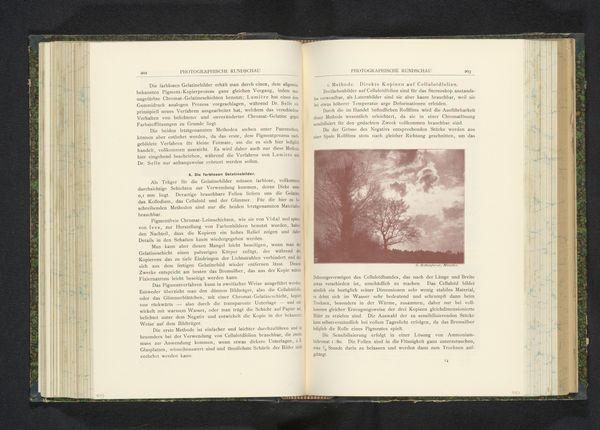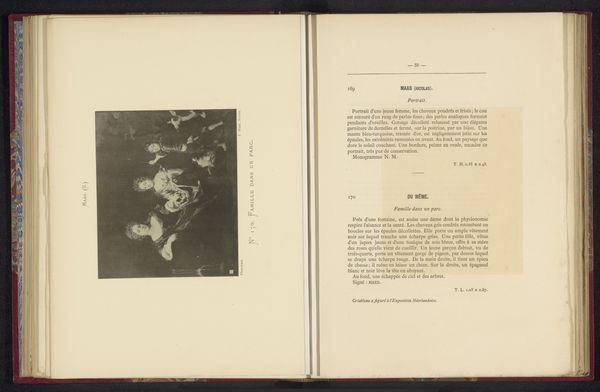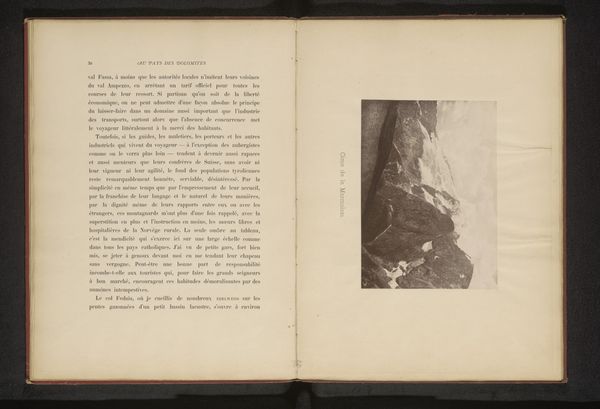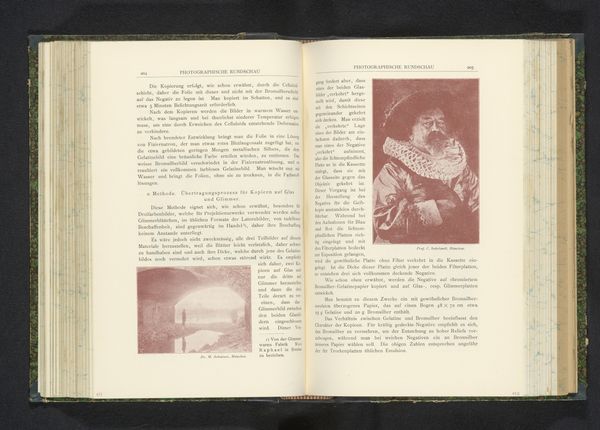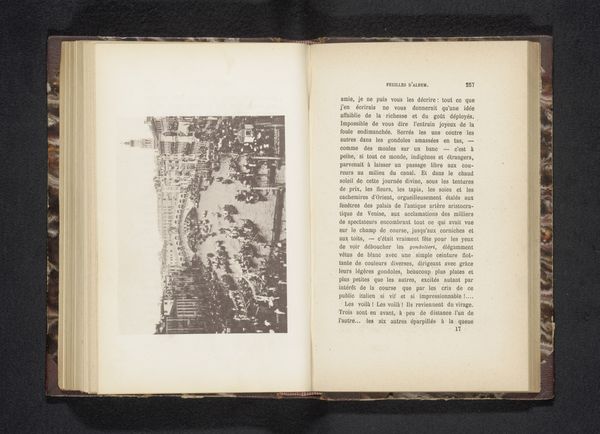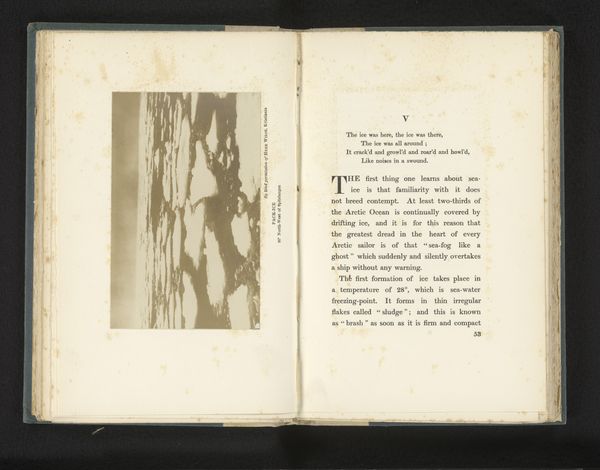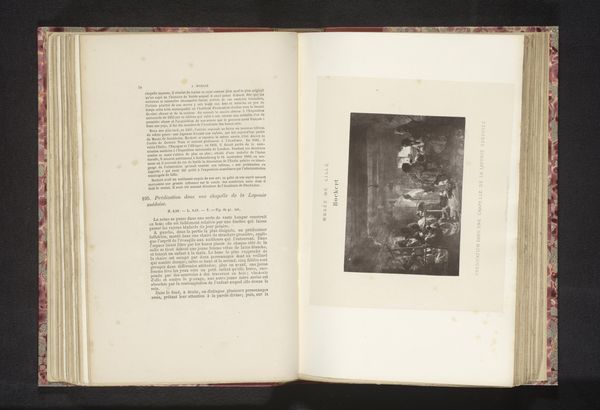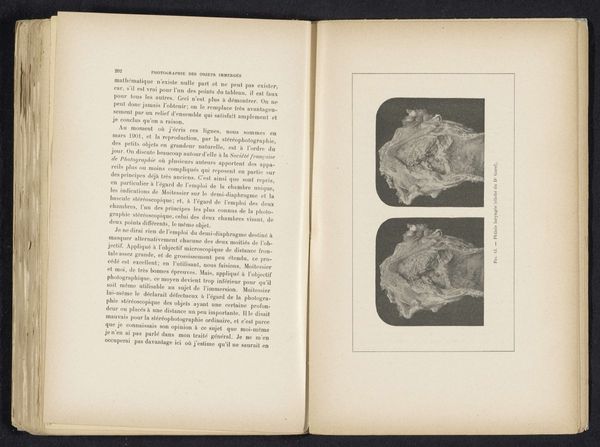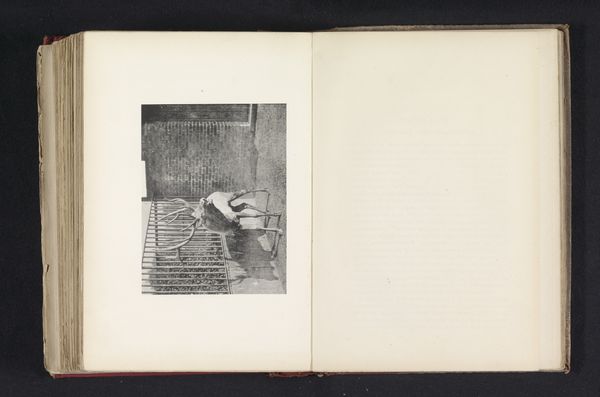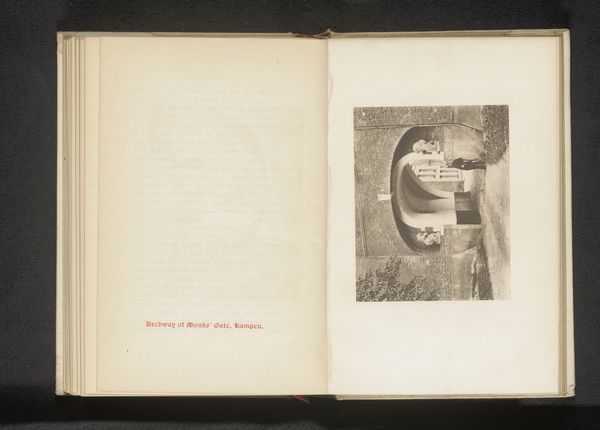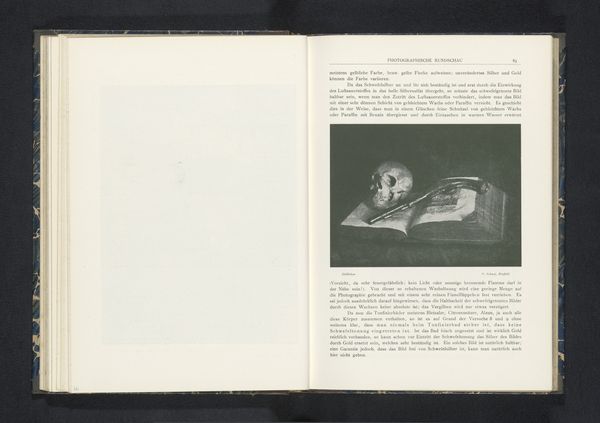
print, textile, paper, photography
# print
#
landscape
#
textile
#
river
#
paper
#
photography
#
academic-art
Dimensions: height 74 mm, width 100 mm
Copyright: Rijks Museum: Open Domain
Curator: This photogravure, titled "Waterval van de Inkisi te Congo," captures the Inkisi Falls in the Congo, dating from before 1892. It's presented here within the leaves of a printed volume, itself part of our collection of textile samples, prints, and photography. Editor: It’s stark, even haunting. The dark ink and rough texture give the impression of a place both powerfully vital and utterly remote. Almost like looking at an artifact from a lost world, trapped between the pages. Curator: Absolutely, the landscape evokes a kind of cultural memory. Water, in many traditions, represents purification and life, yet the stark execution here carries colonial-era connotations, possibly framing nature as something to be examined and catalogued rather than revered. What visual symbols do you see at play? Editor: Well, there's the undeniable tension of power. This waterfall—a force of nature—is meticulously documented, categorized in the language of colonial expansion, I think. The very act of printing this scene is a symbol, you see, reflecting an attempt to capture and contain the Congo within a European narrative, to frame both land and resources, the very environment for European extraction. It reflects a certain gaze and objective for its time. Curator: Precisely, this relates to an act of inscribing. The book, with its text, transforms the river into data, knowledge… possession. How do you see this relating to contemporary theoretical work on the gaze and landscape? Editor: The falls become, through the image, both an object of scientific inquiry and a resource ready to be exploited, mirroring critical discourse around postcolonial power dynamics and how it objectifies non-Western people. In my view, it reflects historical trauma; of dispossession, exploitation of both human lives and of the land itself. Curator: I agree that the social and political conditions of the time echo through the printmaking itself. The book then transforms this waterfall, a powerful force of nature, into an artifact for analysis and control. I believe there's a broader dialogue on cultural exchange and misinterpretation encapsulated within this piece. Editor: It is a good starting point for reflecting on how we perceive and document, who holds the authority to tell stories, and the implications these narratives can carry through generations.
Comments
No comments
Be the first to comment and join the conversation on the ultimate creative platform.
